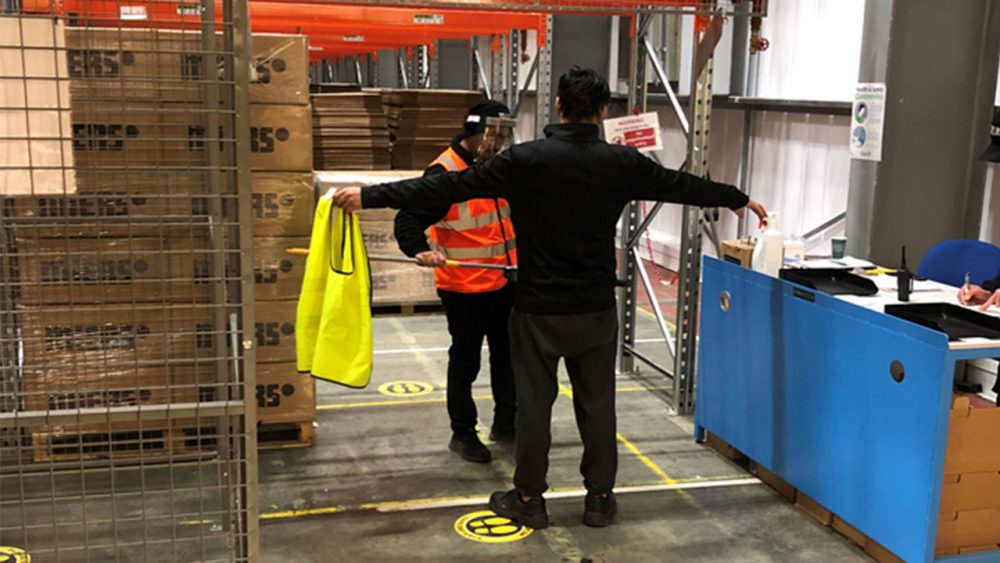They’re widely used – but ineffective. Luckily, better technology is available.
By Colin Culleton, Founder and Director – Asset Protect Consulting Ltd
Hand-held metal detectors or “wands” have been used to screen employees and deter theft at distribution centres and warehouses for decades. Developed in the 1960’s, at the dawn of the modern logistics era, handheld metal detectors – somewhat incredibly – are still the mainstay for employee security screening at many modern distribution centers.
Why?
For the most part it’s because “wands” are relatively inexpensive, easy to use, and, under the right circumstances, capable of detecting concealed metallic items.
Those are the positives. Now consider the negatives from a security and loss prevention standpoint.
They can’t detect what is being stolen from warehouses and distribution centers today. This includes small electronics, pharmaceuticals and cosmetics, apparel and other soft goods, CDs and DVDs, USB sticks, groceries and alcohol. Anything made of plastics, ceramics, wood or organic materials.
High value items stored in distribution centres have changed over the last 60 years – but handheld metal detectors have not. They are simply useless from a security standpoint when these items are being stolen – and criminals know it.
They leave security managers in the dark. The wand beeps. Is it a stolen item? Or keys? Or metal in a bra? Metal detectors don’t provide much information when they alarm. It could be a stolen item that causes them to beep. Or it could be a set of keys in your pocket – a false alarm. Sophisticated criminals know how to exploit this weakness by, for example, concealing items where metal could be present – such as a bra.
They require divestment and pat-downs. Because metal detectors don’t provide much information on the location, shape or size of a detected item, and because they “false alarm” frequently, they are rarely a standalone screening solution. In fact, to work at all, security staff need to require time-consuming pre-screening “divestment” of all metallic goods. And then, if a metal detector alarms, the security staff often need to conduct a pat-down – not a good use of their time, and no guarantee that a well-concealed item will be found.
They undermine COVID safety protocols. There is no way to conduct a search with a handheld metal detector from six feet away – it requires close proximity with the employee. This is uncomfortable at the best of times, but not possible during the COVID crisis … and in the post-COVID environment, it is one of those things that we all expect never to have to go back to.
Deterrence? Or false sense of security? Distribution centre security managers and loss prevention executives are usually well aware of the shortcomings of metal detector wands. Yet they continue to use them because they are “better than nothing”. And to be fair, they can deter some unsophisticated thieves. But with the explosive growth of e-commerce, organised retail criminal gangs are now targeting warehouses and distribution centres – a trend that is likely to continue. These criminal gangs know exactly how to exploit the security vulnerabilities created by metal detectors.
There is better technology available.
Fortunately, security managers no longer have to “settle” for handheld metal detectors. For example, a growing number of major retailers and logistics firms have deployed a “safe distance” employee screening solution that uses passive terahertz technology.
The technology was developed by the European Space Agency, and then commercialized by UK-based Thruvision. Thruvision’s system, which is used by FedEx, Sony, NEXT and other leading retailers and their home delivery partners, can detect all types of concealed items (including liquids and non-metallics) hidden in clothing at a safe distance of 10 feet. This reduces the risk of COVID-19 transmission and allows for a non-intrusive security screening process. By allowing security staff to see any items hidden in clothing, it removes the need for physical searching (pat-downs). Most importantly, from a security perspective, this technology detects what wands cannot – stopping and deterring crime at distribution centers.
Colin Culleton is a Risk Management and Loss Prevention Consultant with extensive experience in retail profit protection with a proven track record for improving compliance and profit in successful and challenging businesses.



Comments are closed.